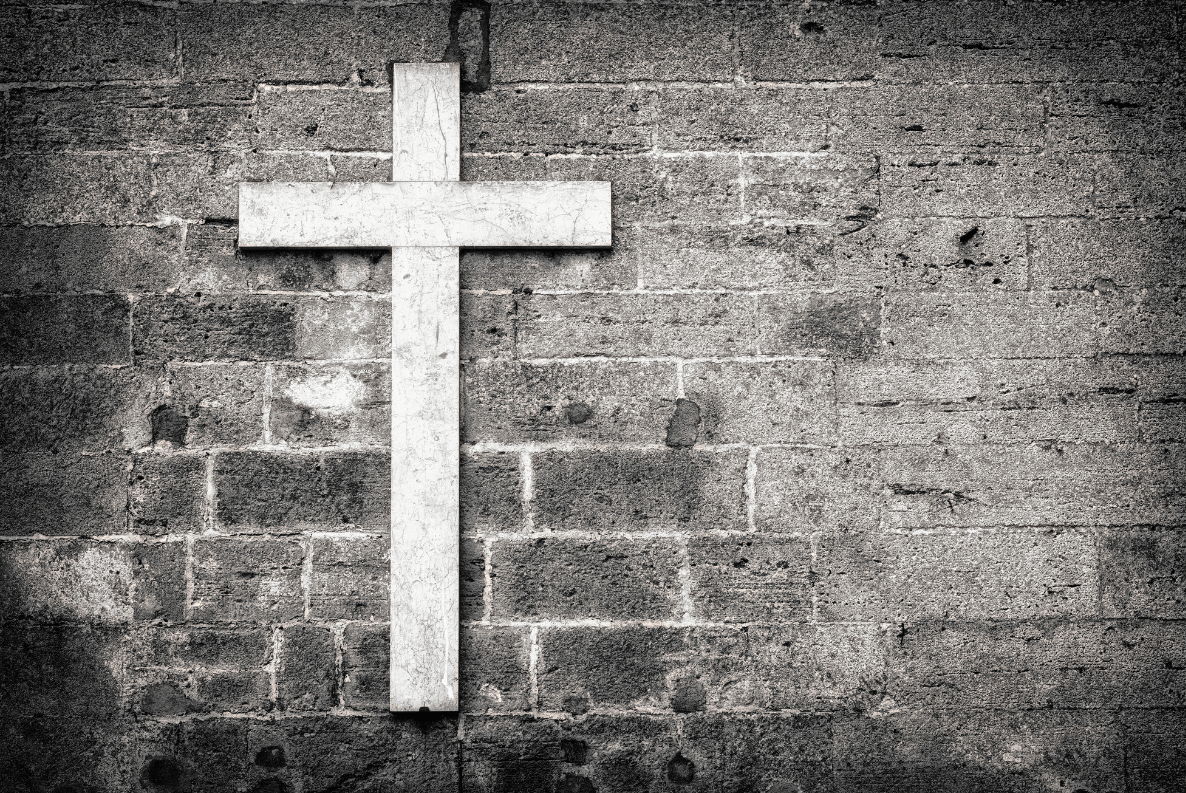Psalm 22 and Jesus' Cry from the Cross
Looking at Jesus' cry from the cross and how God is faithful and present to Jesus

On the 3rd of July, I preached on Psalm 22, focusing on why Jesus quotes this Psalm as he cries out in pain from the cross, as described in Mark 15. I focused on two points: first, that Jesus understands and redeems our experiences of being forsaken by God; second, that God has not in fact forsaken Jesus and does not ever abandon us in our need. We really do feel that way, and I believe that Jesus really did feel like God had abandoned him. But God is with us, even (and maybe especially) when we feel most in need.
For the blog post today, I want to take up a relatively theological question about that scene and the idea of Jesus as forsaken by God. Some traditions argue that Jesus is forsaken because God cannot look on sin, and Jesus became sin in such a way that the Father had to turn his back on the Son at the cross. There are theological and practical arguments we could make about this, and I’m game to go there if you are interested, but this post will be focused on the biblical evidence for the idea that God abandoned Jesus on the cross.
Did God abandon Jesus at the cross? That is, does God ontologically forsake the human Jesus as Jesus dies, thereby causing a rift within the Trinity and abandoning the second person of the Triune God to hell from the time of the crucifixion until the resurrection? I’m not convinced.
First, scripturally, that would mean that God abandons faithful Israel at the moment when Israel demonstrates faithfulness in Jesus. This, to me (there could be other ways to see this, I recognize), means that God can and does abandon His faithful children even in their faithfulness. That would go against everything we know about God’s character from the Scriptures.
Second, the idea that God abandons Jesus at the cross comes from two (literally only two) verses in the Scriptures, and one of the two is developed from the other: Matthew 27:46 and Mark 15:34. they are essentially the same account (most scholars believe that Mark wrote first and then Matthew reworked and developed Mark’s account). In other words, the idea of God’s abandoning the Son is not a developed theme in the New Testament. There is no explanation of it in other places, such as a Pauline development of the theology of what it means that Jesus was forsaken by God. Instead, theological development on the cross emphasizes that there God made Himself available and known to humanity.
Third, the Gospel writers describe Jesus’ cry from the cross as part of their use of Psalm 22 in the passion narrative. Let’s work through how the Gospels use Psalm 22 as they describe Jesus’ death.
Each of the four gospel accounts quotes from Psalm 22 (Matthew 27:35, 46; Mark 15:24, 34; Luke 23:34; John 19:24). John is the most explicit, saying that the dividing of Jesus’ clothes is a fulfillment of the Scriptures, and then quoting Psalm 22:18. Psalm 22 is very clearly part of the thought-world of the writers when they describe Jesus’ death. So, what is that thought-world? What do the gospel writers have in mind?
Psalm 22 in outline:
- 1-2: “My God my God, why have you forsaken me?”
- 3-5: My ancestors trusted in you and were saved
- 6-8: But I am a worm and not a human (and therefore, unlike my ancestors, I am not worth saving)
- 9-11: But you made me, from the womb (and therefore, I’m not really a worm but an image-bearer of God); God be near me
- 12-18: My enemies are near; they surround me, they have pierced me, they are dividing my clothes
- 19-21: God, don’t be far from me, deliver me
- 22-31: I will praise you; the assembly will praise you; all the ends of the earth will turn to you–including the rich, poor, and all generations–who will say “He has done it!”
So: in Psalm 22, the Psalmist looks and feels forsaken, but the result is salvation that leads to universal–including all nations and all generations–praise of God. The Psalmist cries out in anguish but the result of the cry of anguish is the reminder that God is faithful. Anguish and praise go back-and-forth in the Psalm: forsakenness to reminder of God’s faithfulness to feelings of being undeserving to reminders of God’s creation to feeling surrounded to cry for God to be near to praise. It’s not an easy or straightforward Psalm that moves from lament to praise. Psalm 22 takes us through the the experience of struggle to get to praise. But the Psalmist finally gets to a universal and complete vision of praise. The end does not resolve with the resolution of the Psalmist’s immediate situation but with an eschatological and fulfilled vision, including all nations and generations. The Psalm moves from forsakenness to total shalom.
Verse 24 is key to that vision: “For he has not despised or scorned/ the suffering of the afflicted one;/ he has not hidden his face from him/ but has listened to his cry for help.” Despite the sense of alienation and abandonment that the Psalmist experiences, God has not in fact abandoned him. The “afflicted one” is, in reality, “not despised or scorned” nor is God’s “face” “hidden”. Instead, God “has listened to his cry”. (Just a note: the Hebrew term for “listen” always carries the weight of action with it; one cannot “listen” and not be moved to action. “Listen” might as well be translated “listen and obey”.) So, God is near to the afflicted one who suffers. Though a person might be afflicted and experience suffering, God is near, listening and acting on behalf of the sufferer.
Ok, if that’s the case, how might the gospel writers be understanding Jesus’ experience in light of Psalm 22?
I want to suggest that they are experiencing both the big theme of the Psalm and its details.
Again, the big theme is this: what looks and feels like forsakenness and defeat is actually the path to victory and faithfulness because of the nearness and presence of God.
I think it’s important to say this because it seems to me to fit with all of the gospel accounts’ and their understandings of Jesus’ death. Over and over, the Gospels tell us that Jesus’ crucifixion looks like a defeat but is actually victory; that it looks like Satan (through Rome) has won but this is where Satan loses; that it looks like God has rejected Jesus but He has actually vindicated him; that it looks like God is no longer faithful to Israel and His creation but His faithfulness is actually being demonstrated in Jesus.
Let’s look at the Gospel accounts and how they use Psalm 22. In Matthew and Mark, who record Jesus crying out “My God my God, why have you forsaken me?”, the texts say that Jesus cries out and then gives up his spirit. In both accounts, this is clearly a coronation scene and his death is the moment of his full enthronement, so that the centurion watches Jesus die and at that moment realizes that he is the Son of God. Indeed, this one is a divine king, and that is fully discernible as he dies.
In Luke, Jesus does not make this same cry. Instead, in his anguish, he is focused on others. Right before quoting from Psalm 22:18 (“they divided up his clothes by casting lots”, Luke 23:34), Luke describes Jesus as asking the Father to forgive. He also prophecies judgement on the people around him (which is likely a reference to the destruction of the Temple in AD 70), he gives mercy to a repentant criminal, and then–at the moment of his death–he testifies to the nearness and presence of the Father: “Father, into your hands, I commit my spirit.” And then, again, the centurion recognizes God’s hand as Jesus dies: “Surely this man was righteous.”
In John, where the quote from Psalm 22:18 is much more explicit and is set apart as fulfillment of Scripture (John 19:24), Jesus focuses on the women and the beloved disciple, then he is thirsty, then “it is finished” and he dies.
In Luke and John, there is no sense whatsoever of Jesus having been abandoned by the Father. Jesus is totally aware of accomplishing the will of the Father. Again, Luke has Jesus say, “Father, into your hands I commit my spirit”; and John has Jesus cry “it is finished.” The references to Psalm 22 in both accounts certainly indicate pain, anguish, struggle but not an ontological break in the Trinity. In these two accounts, you could even make the case that the Psalm 22 references are the clearest indications that Jesus was in serious pain. He does not cry out or express intense anguish in these two accounts. My intention is not to prioritize Luke and John over Matthew and Mark but to provide context for how the early church understood how Jesus experienced his death. Jesus felt anguish (certainly); Jesus may have even felt abandoned by the Father (that would be an understandable existential reality, given his suffering). But the gospel writers do not emphasize–they do not even consistently hint at–an ontological break within the Trinity. In fact, I would argue that they are more consistent in arguing that the Father was making Himself near to humanity and to Jesus as Jesus died. Put another way, the Father was making Himself near to humanity and to creation in and through the dying Jesus. The whole event speaks of the nearness and salvific action of God, not of the Father’s rejection of the Son.
So, for instance, in Matthew, Mark, and Luke, the veil or curtain in the Temple is torn in two. This indicates that God has broken out and is now present to all of His creation, not contained in a Temple. He is present and near to all of us!
Also, the centurion’s words in Matthew (“Surely this man was the Son of God!”), Mark (“Surely this man was the Son of God!”), and Luke (“Surely this was a righteous man!”) demonstrate that God has revealed Himself in Jesus’s death–He is here, showing Himself to the world!
The darkness (Matthew 27:45, Mark 15:33), the earthquake (Matthew 27:51, Luke 23:44), the breaking rocks (Matthew 27:51), and the tombs opening and the dead walking around (Matthew 27:52-53) all show that God has made Himself near. Some pastors have argued that these events show that creation is coming apart because the Trinity has been broken and the Father has turned His face away, but to argue that is to forget what it looks like when God shows up, in the Old and New Testaments (see, for example: Mt Sinai, the darkness at the Temple dedication, the prophecies about the Day of the Lord, creation’s undoing at the Lord’s appearances in Revelation, etc). When God shows up, crazy, supernatural events occur; at Jesus’ death, in a series of crazy, supernatural events, God is present and glorifying Himself in a clear and demonstrable way.
In the final analysis, it does not fit the gospel accounts to say that God the Father abandoned or forsook the Son at the cross. Jesus cries out in anguish, “My God my God, why have you forsaken me?” but this cry quotes from Psalm 22, where the initial feeling of forsakenness leads to eschatological salvation. Jesus cries out as a way of expressing both his sense of anguish but also his faith in God’s ultimate victory. And this cry fits within the larger Gospel story that God is present and has come close to creation in Jesus. That is no less true at Jesus’ death than in his life.
Blessings,
Josh










